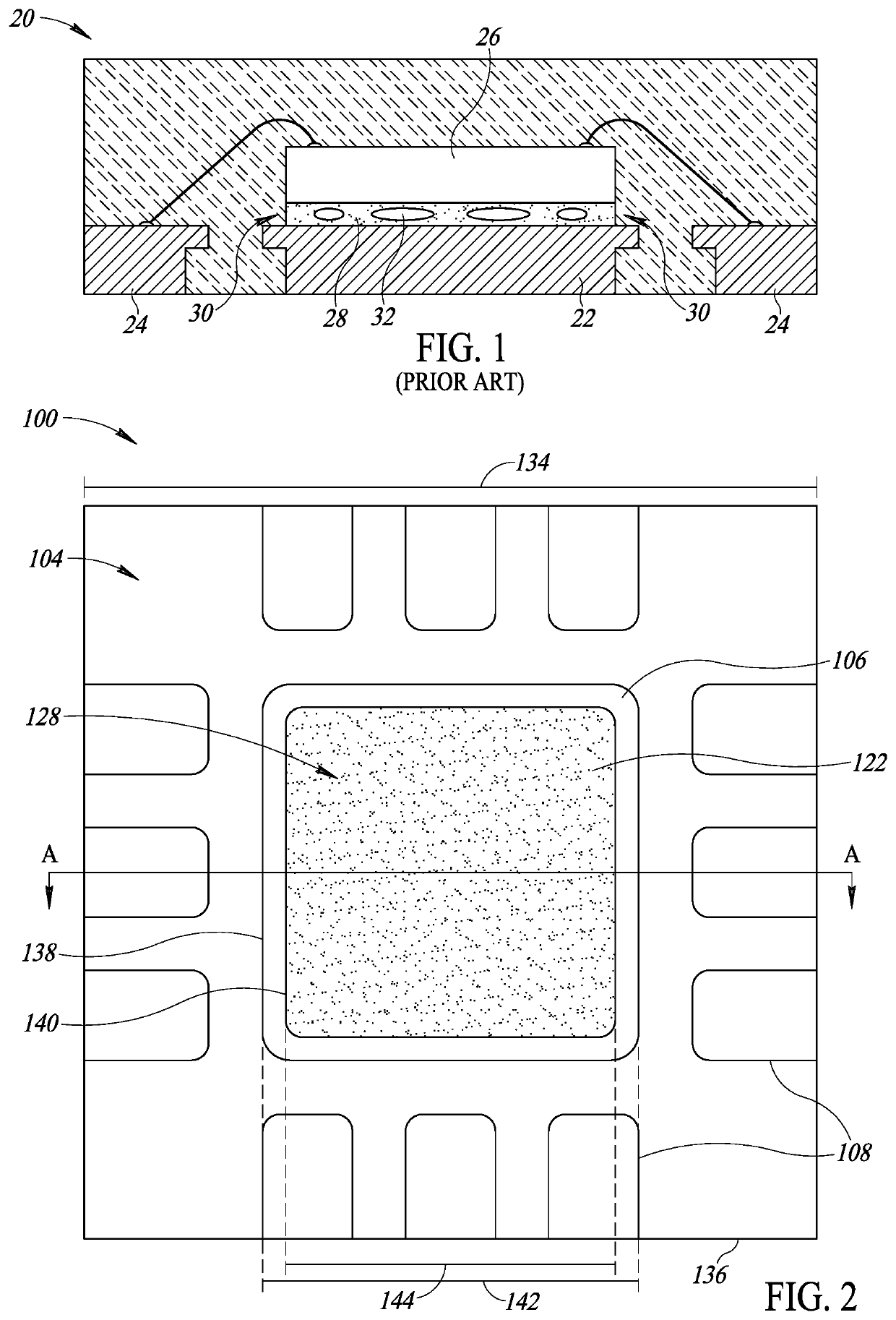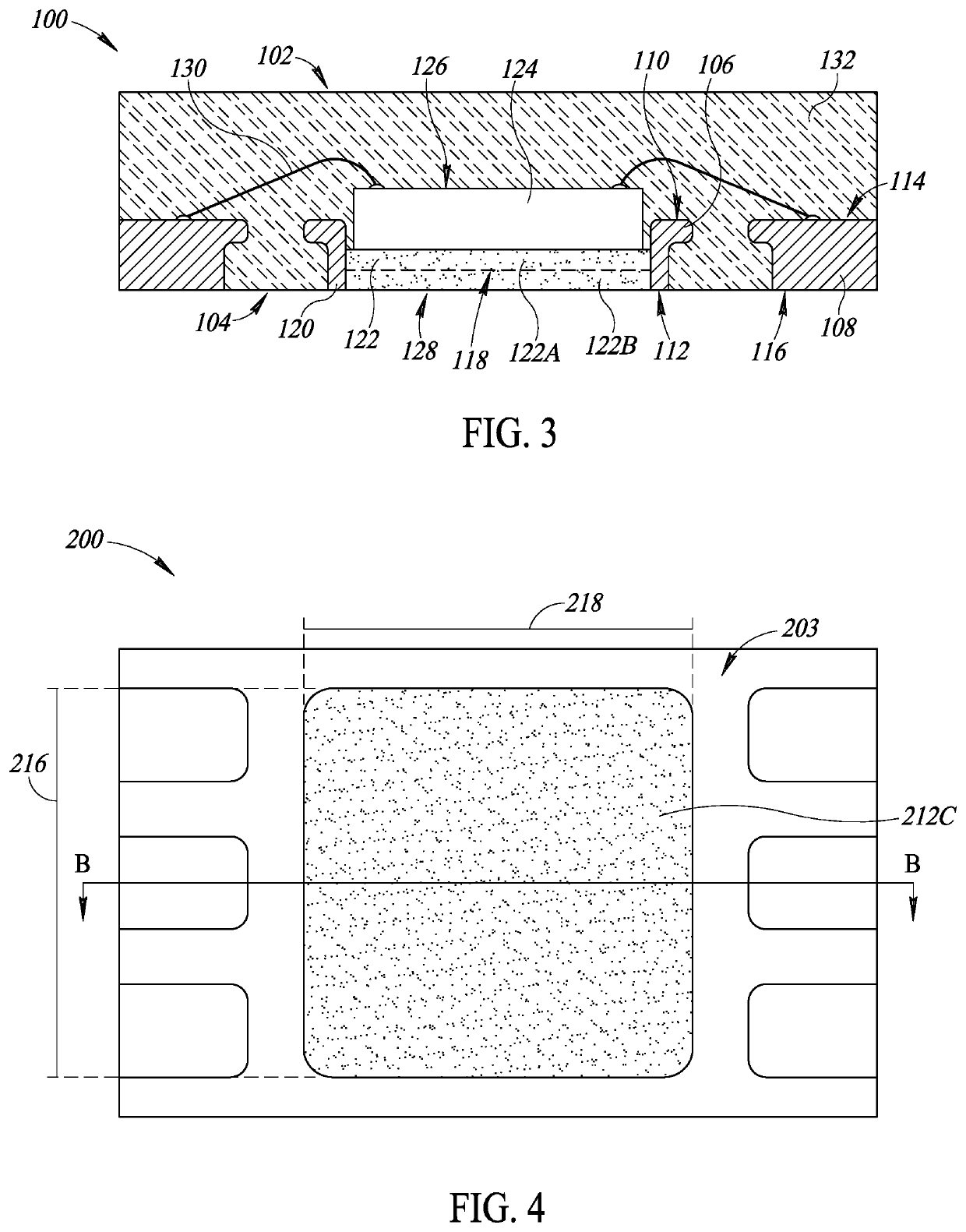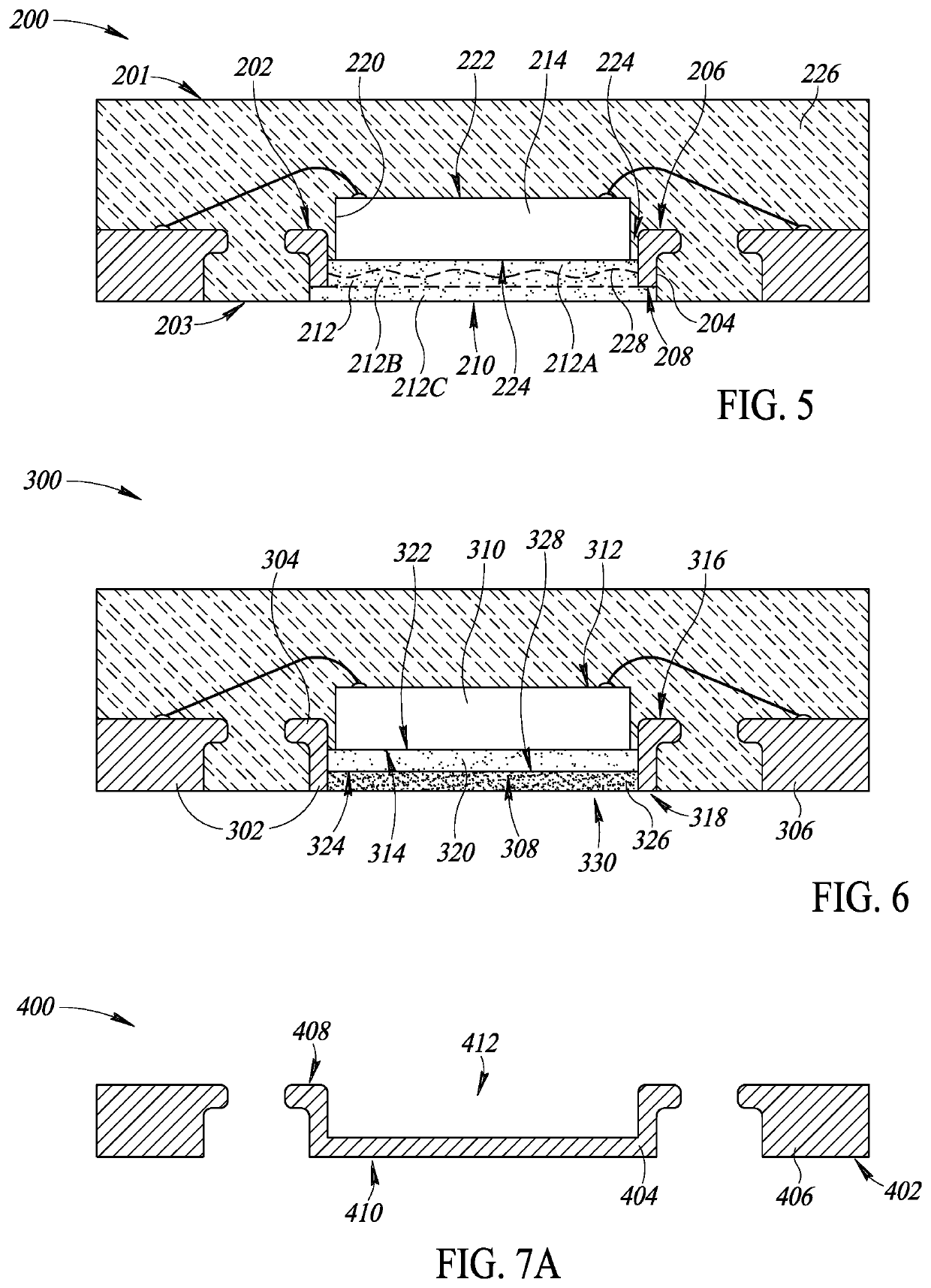Semiconductor package with a cavity in a die pad for reducing voids in the solder
a technology of die pad and solder, which is applied in the direction of semiconductor devices, semiconductor/solid-state device details, casings/cabinets/drawer details, etc., can solve the problems of gas bubbles, reduce the efficiency of heat transfer, and volatile components of the solder material, so as to increase the probability of gas trapped, and strong physical and electrical connection
- Summary
- Abstract
- Description
- Claims
- Application Information
AI Technical Summary
Benefits of technology
Problems solved by technology
Method used
Image
Examples
Embodiment Construction
[0019]The present disclosure is generally directed to semiconductor packages having a cavity or aperture in a die pad of the package with solder or other material in the cavity coplanar with a surface of the die pad. The cavity allows for solder voids in the solder to escape during solder reflows, thus reducing the presence of solder voids and increasing thermal performance of the package.
[0020]FIG. 1 illustrates a known semiconductor package 20. The package 20 includes a die pad 22 and a plurality of leads 24. A semiconductor die 26 is coupled to the die pad 22 with a die attach material 28, which may be solder. Because the die pad 22 is typically a solid block of metal, the material 28 is only exposed to the ambient environment at sides 30 of the material 28. FIG. 1 illustrates the package 20 significantly enlarged for clarity. In actuality, a typical package 20 is on the order of a few millimeters in width, length, and thickness. As such, the area of die attach material 28 expose...
PUM
| Property | Measurement | Unit |
|---|---|---|
| area | aaaaa | aaaaa |
| thermal conductivity | aaaaa | aaaaa |
| concentration | aaaaa | aaaaa |
Abstract
Description
Claims
Application Information
 Login to View More
Login to View More - R&D
- Intellectual Property
- Life Sciences
- Materials
- Tech Scout
- Unparalleled Data Quality
- Higher Quality Content
- 60% Fewer Hallucinations
Browse by: Latest US Patents, China's latest patents, Technical Efficacy Thesaurus, Application Domain, Technology Topic, Popular Technical Reports.
© 2025 PatSnap. All rights reserved.Legal|Privacy policy|Modern Slavery Act Transparency Statement|Sitemap|About US| Contact US: help@patsnap.com



